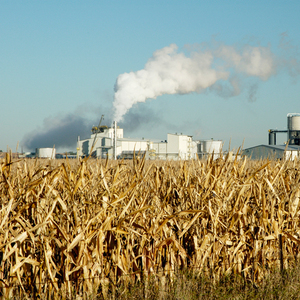FTC issues annual report on concentration of the ethanol market

December 8, 2017
BY Erin Krueger
The Federal Trade Commission recently released its 2017 Report on Ethanol Market Concentration, finding that concentration is substantially unchanged from a year ago.
The annual report is required under the Energy Policy Act of 2005 “to determine whether there is sufficient competition among industry participants to avoid price-setting and other anticompetitive behavior.” Under statute, the report must be completed and delivered to congress and the U.S. EPA administrator by Dec. 1 of each year.
According to the FTC, the 2017 report concludes that “the low level of concentration and large number of market participants in the U.S. ethanol production industry continue to suggest that the exercise of market power to set prices, or to coordinate on price and output levels, is unlikely.”
Advertisement
Advertisement
The report indicates that margins for the U.S. ethanol industry averaged 23 cents per gallon during the first eight months of 2017. Over the same period, the average net cost of corn was 81 cents per gallon, and ethanol prices averaged $1.45 per gallon.
From June 2016 through May 2017, the report shows that domestic ethanol production increased from 15 billion gallons to 15.6 billion gallons. Production capacity, including capacity under construction, increased to approximately 16.6 billion gallons per year. The FTC said this marks the fourth consecutive year of capacity increases.
Advertisement
Advertisement
According to the report, ethanol exports have also increased. From July 2016 through June 2017, the U.S. exported approximately 1.3 billion gallons of ethanol, up 40 percent from the same period of the prior year. The FTC noted that the increase marks the fourth consecutive year of increased ethanol exports.
The report also notes that more than 100 U.S. firms currently produce or are capable of producing ethanol. The largest ethanol producer’s share of domestic capacity is approximately 11 percent, unchanged from its 2016 share.
A full copy of the report can be downloaded from the FTC website.
Related Stories
The U.S. EPA on July 8 hosted virtual public hearing to gather input on the agency’s recently released proposed rule to set 2026 and 2027 RFS RVOs. Members of the biofuel industry were among those to offer testimony during the event.
The USDA’s Risk Management Agency is implementing multiple changes to the Camelina pilot insurance program for the 2026 and succeeding crop years. The changes will expand coverage options and provide greater flexibility for producers.
EcoCeres Inc. has signed a multi-year agreement to supply British Airways with sustainable aviation fuel (SAF). The fuel will be produced from 100% waste-based biomass feedstock, such as used cooking oil (UCO).
President Trump on July 4 signed the “One Big Beautiful Bill Act.” The legislation extends and updates the 45Z credit and revives a tax credit benefiting small biodiesel producers but repeals several other bioenergy-related tax incentives.
CARB on June 27 announced amendments to the state’s LCFS regulations will take effect beginning on July 1. The amended regulations were approved by the agency in November 2024, but implementation was delayed due to regulatory clarity issues.
Upcoming Events










